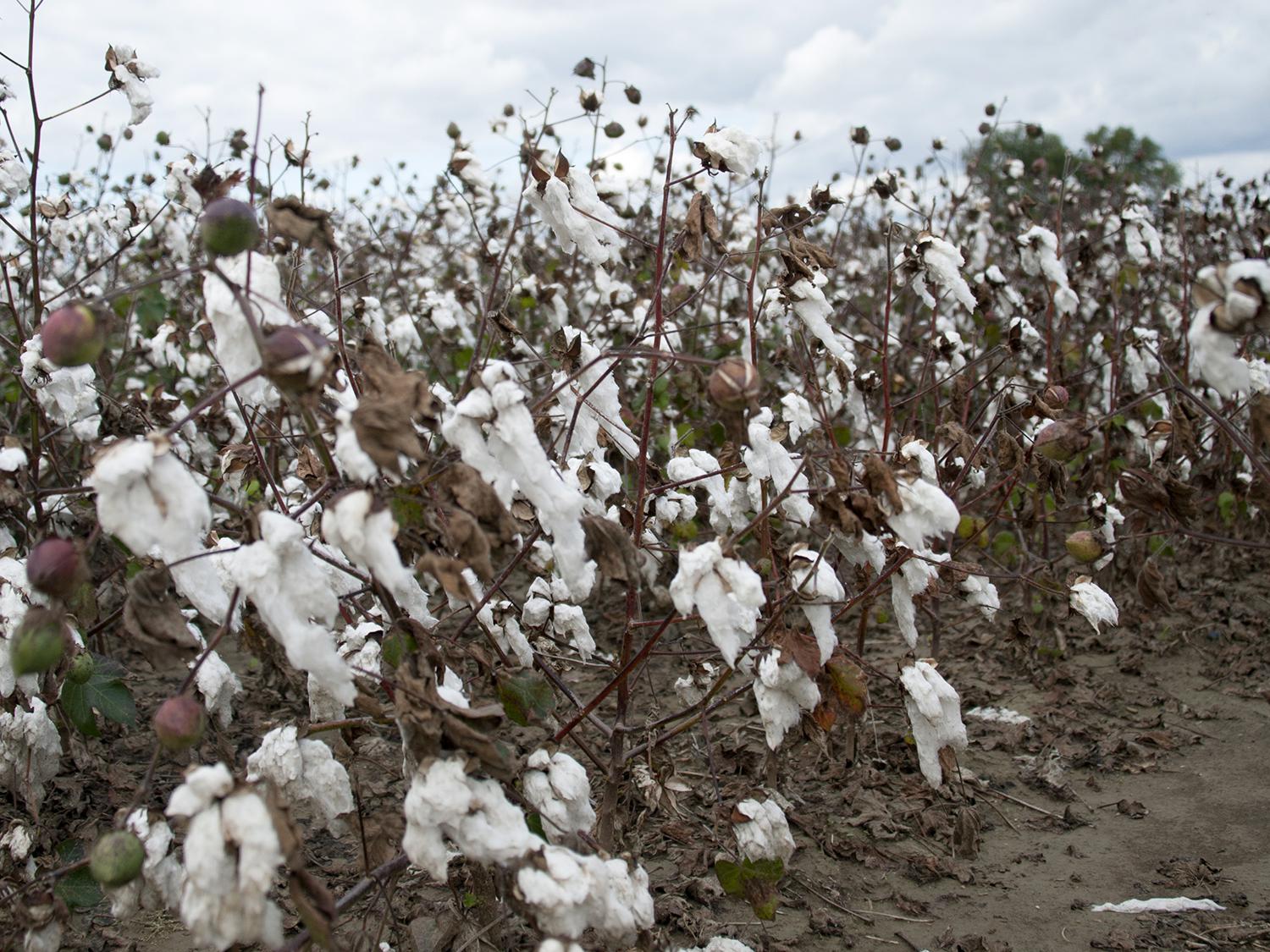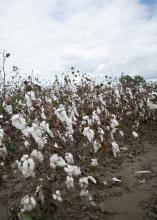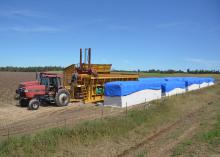Information Possibly Outdated
The information presented on this page was originally released on October 17, 2014. It may not be outdated, but please search our site for more current information. If you plan to quote or reference this information in a publication, please check with the Extension specialist or author before proceeding.
Harsh Oct. 13 storm should not hurt yields
MISSISSIPPI STATE -- The major storm that passed through the state Oct. 13 brought a lot of wind and rain but caused little damage to the state’s row crops, because most of them were already harvested.
According to U.S. Department of Agriculture figures released Oct. 12, harvest was 87 percent complete for rice, 74 percent complete for soybeans, 98 percent complete for corn and 85 percent complete for sorghum. Only 38 percent of cotton had been harvested when the storm hit.
Bobby Golden, Mississippi Agricultural and Forestry Experiment Station agronomist at Stoneville, said a small amount of rice was planted extremely late, but farmers are pleased with overall yields.
“Our rice harvests should be average to a little above average. We are expecting 155 to 160 bushels per acre,” Golden said. “The north Delta had some really good rice yields that could inflate the state average.”
Weather patterns disrupted rice producers’ management schedules in the early season, but the crop produced good yields despite these challenges.
“I’m very pleased with where we are sitting with yield,” Golden said. “It was definitely not a perfect world to grow rice in this year, but we made it through and are nearing the end.”
Most of Mississippi’s rice grows on heavy soil, so the rains that fell Monday will delay harvest at least a week on the remaining acreage. Although the Oct. 13 storm brought some high winds, Golden said it did not seem to affect the small amount of rice remaining in fields.
Trent Irby, Extension soybean specialist, said harvest progress through early October has been relatively steady. Monday’s storm appears to have had little impact on harvest yield or quality.
“The recent weather system knocked out harvest for a few days, but we expect to resume later this week,” he said on Oct. 15. “With expectations of above average yields, producers are anxious to get the rest of the crop out of the field.”
Darrin Dodds, Extension cotton specialist, said cotton was about halfway through harvest by mid-October, putting it only slightly behind the average harvest time. The strong storm did damage some cotton in the field.
“In areas that received very heavy rainfall, we likely will lose yield due to cotton being dislodged from the boll and ending up on the ground,” Dodds said. “We may also see some quality issues depending on how long it will take this crop to dry out.”
The wet conditions delayed harvest by a few days until the ground dries out enough for equipment to enter the fields.
Despite a late start to the growing season, several factors contributed to the state’s fields producing what looks to be a very good harvest this year.
“We had cooler than normal temperatures for much of the summer, which helped with fruit retention. In addition, it was a lighter than normal plant bug year,” Dodds said. “Mississippi is projected to harvest the second highest yielding crop on record, second only to the crop we harvested last year.”
Mississippi’s corn and grain sorghum crops were almost completely harvested by mid-October. Erick Larson, Extension grain crops specialist, said remaining unharvested fields are susceptible to lodging in storms. Grain crops lodge when wind pushes them to the ground.
“The few acres of corn yet to be harvested reached maturity later than normal, and growers often delayed corn harvest to proceed with soybean harvest, because this crop is much more fragile,” Larson said.
Although farmers are happy with harvest well underway or almost complete, the prices they are getting for crops are not making them smile.
Brian Williams, Extension agricultural economist, said crop yields statewide and nationally are shaping up as record or near-record years. That is not good news for prices.
“Lower crop prices across the board will mean lower revenue for most producers when compared to the past few years,” Williams said.
Rice prices have remained the most stable. Futures are around $12.65 per hundredweight now, compared to a little over $15 per hundredweight a year ago. Soybean prices have dropped most sharply from last year, down 25 percent to current prices of $9.70 a bushel. Cotton has dropped to 64 cents a pound from 80 cents a pound one year ago.
“The biggest factor is higher production nationally,” Williams said. “Soybeans and corn are both expected to have a record crop this year in the U.S. Cotton will not be breaking any production records this year, but the size of the crop is still expected to be up sharply from a year ago, and rice production is expected to be at the highest level since 2010.”









